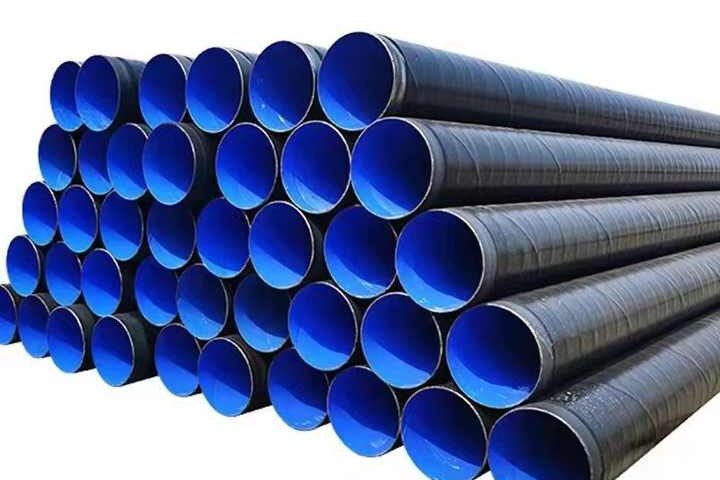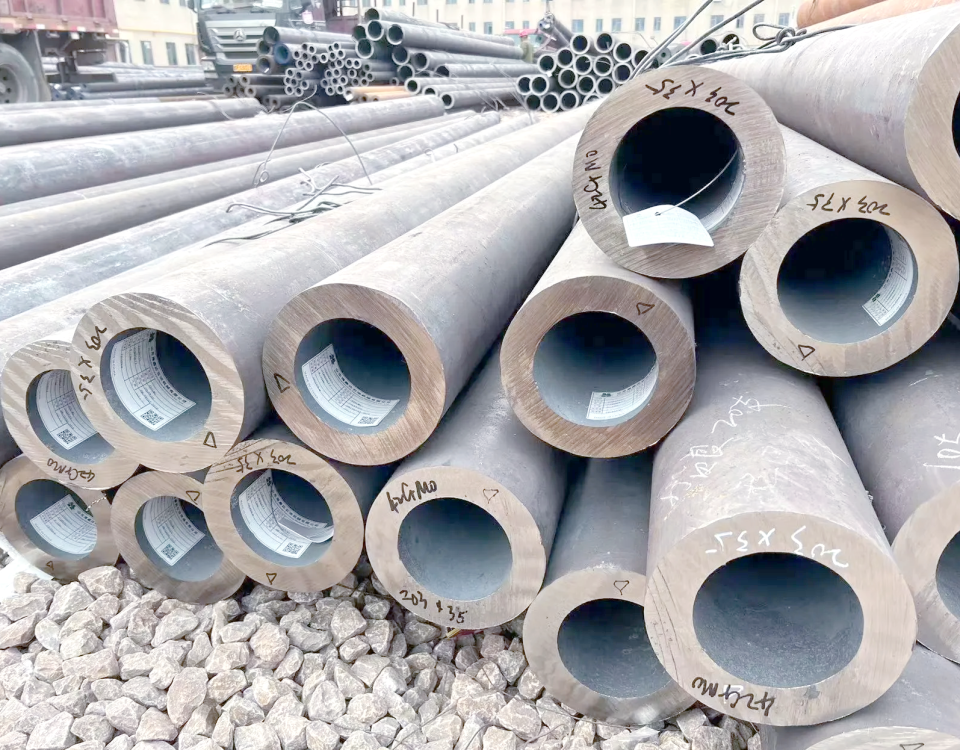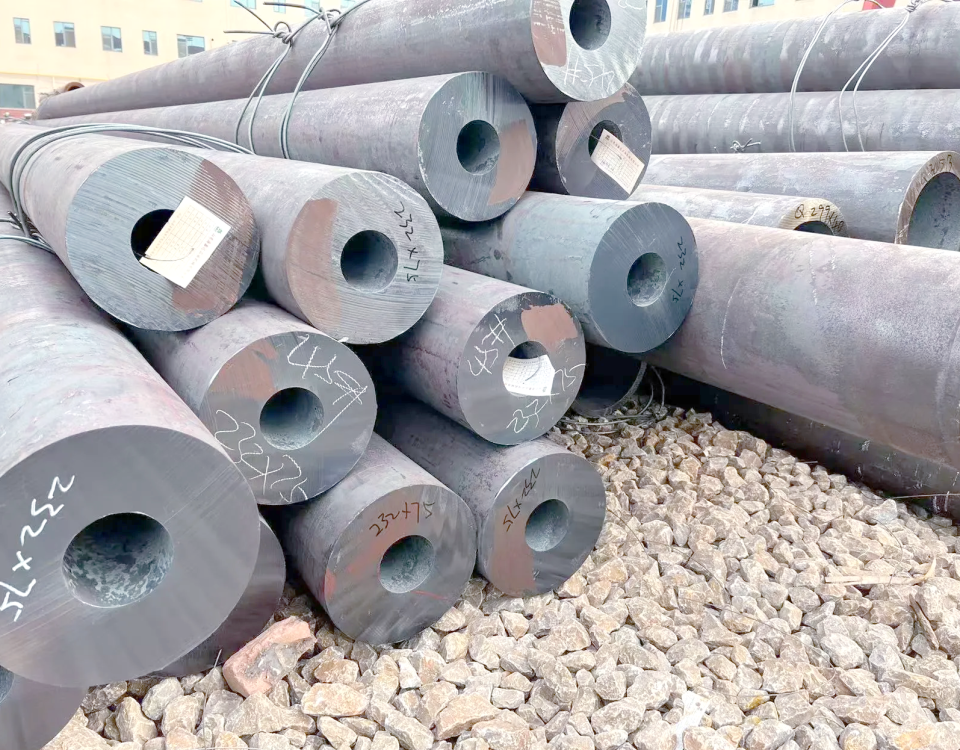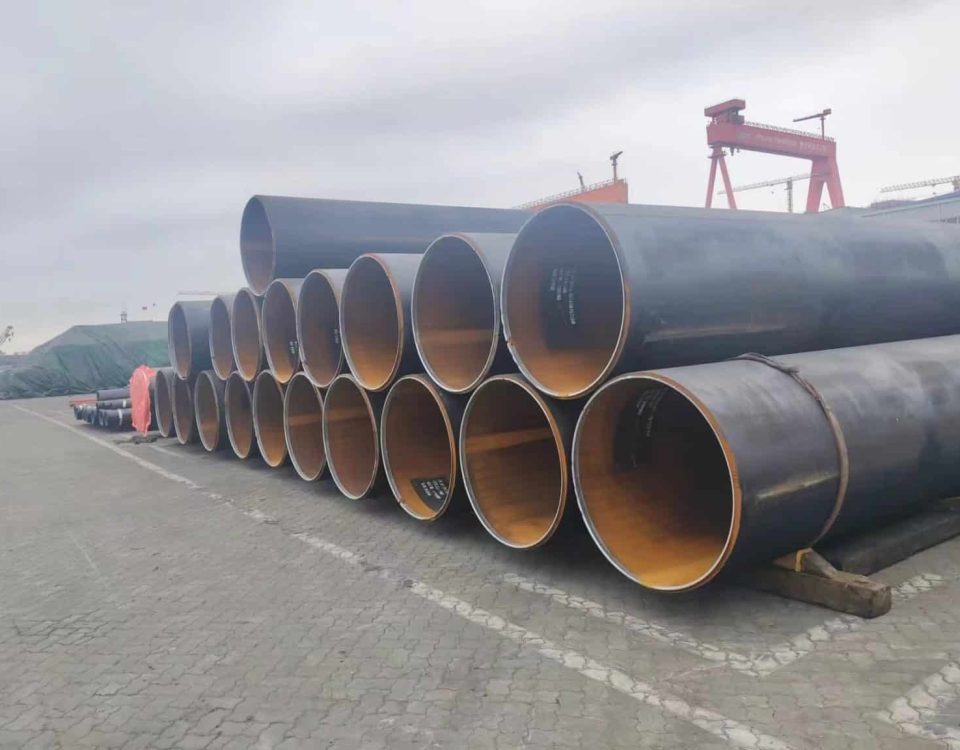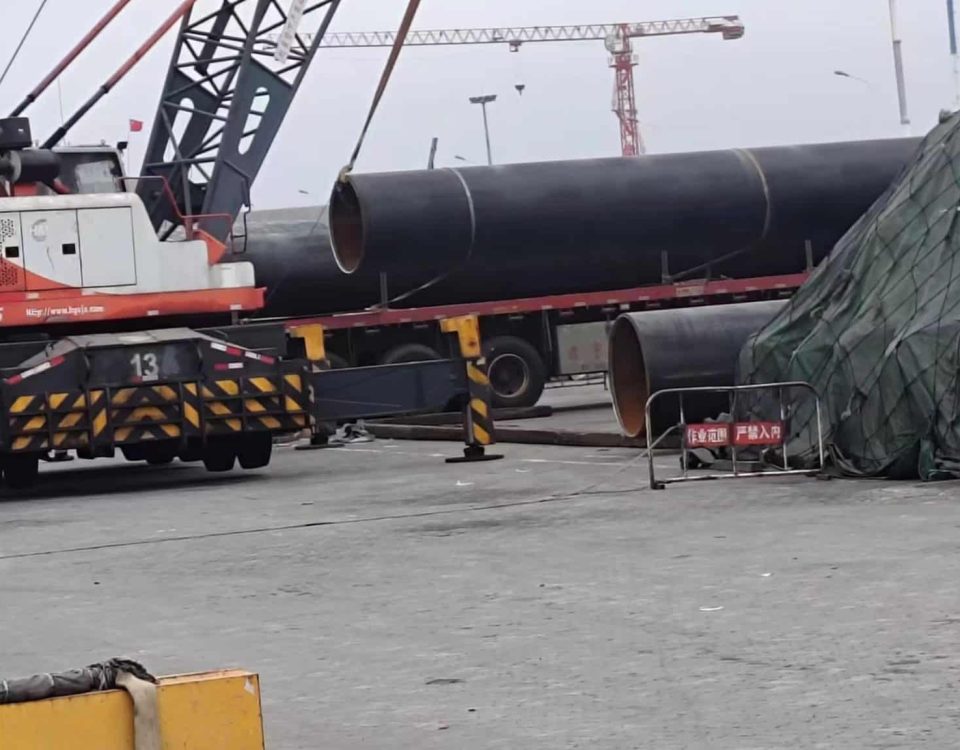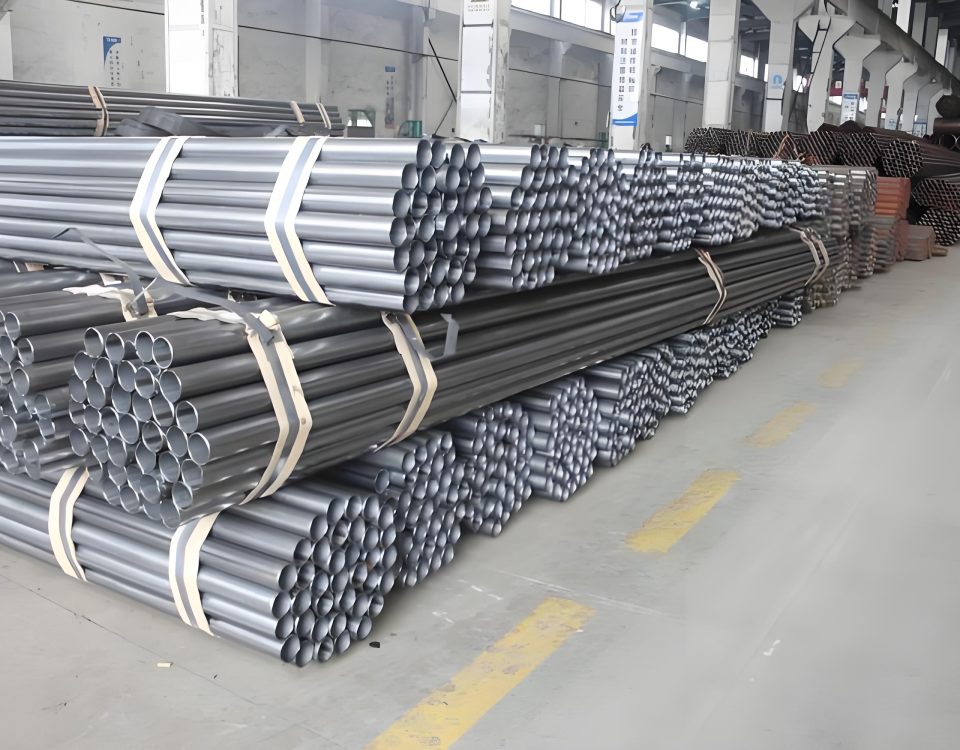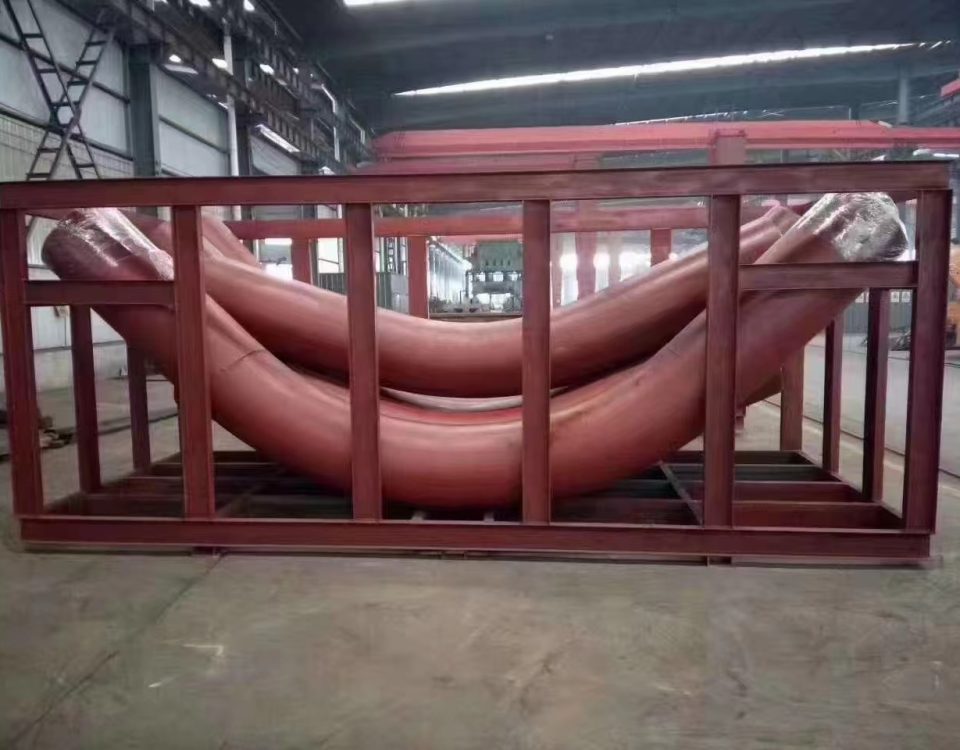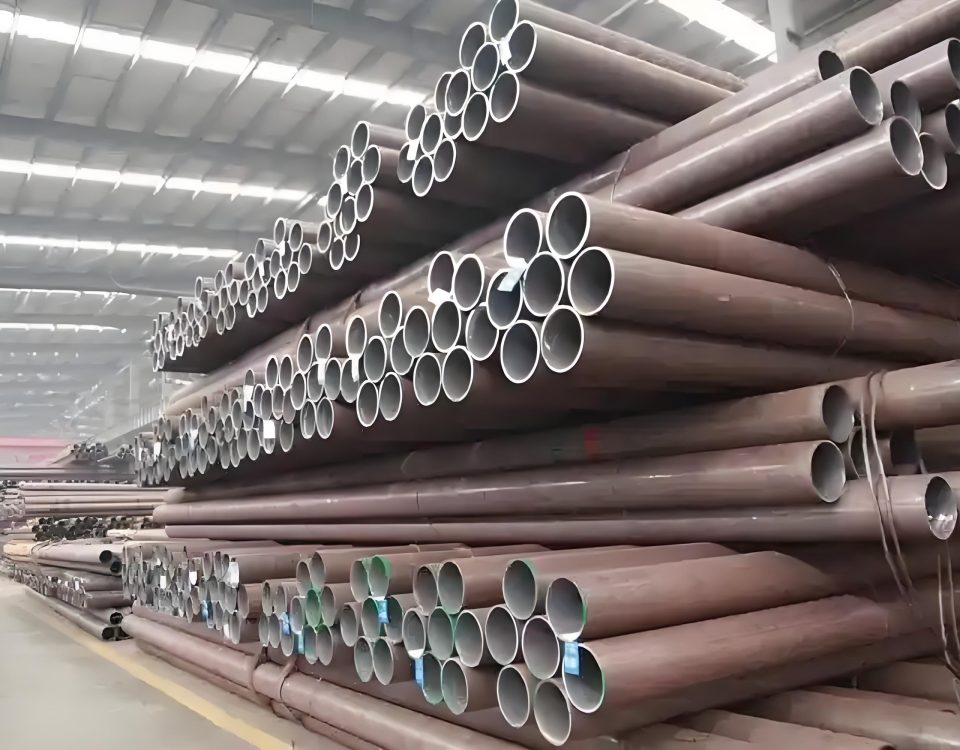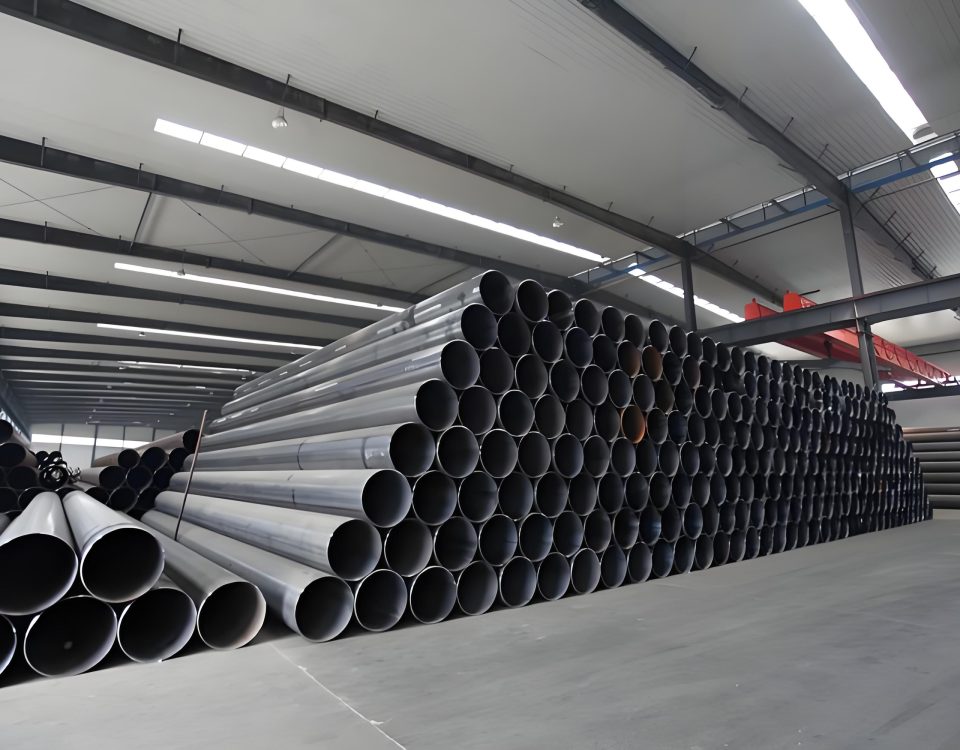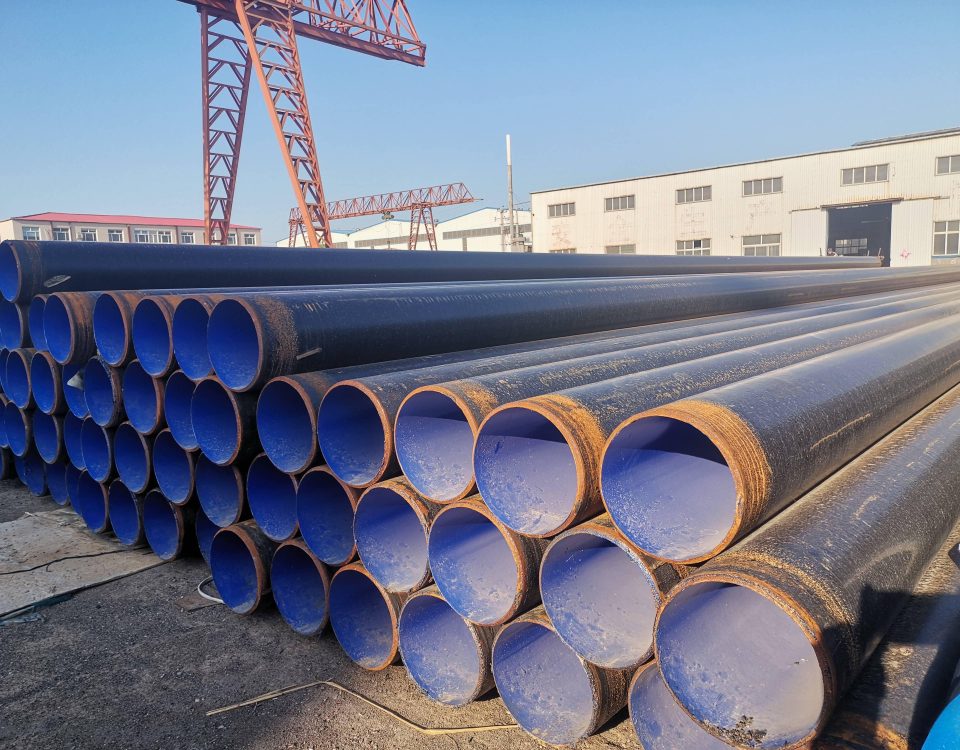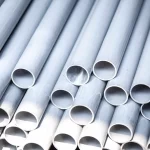
ASTM A789 / ASME SA789, ASTM A790 / ASME SA790, thin/thick wall thickness seamless stainless steel pipe & tube
March 13, 2015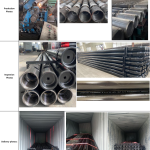
South Africa Drill Pipe Project
June 26, 20151. Understanding TPEP Coating Technology
TPEP Coating Steel Pipe
External 3LPE Coating: Standard DIN 30670, ISO 21809-4
Internal Epoxy Powder Coating: Standard ANSI/AWWA C213
The TPEP coating system is a sophisticated anti-corrosion solution designed to extend the lifespan of steel pipes in aggressive environments. The acronym TPEP stands for Three-Layer Polyethylene Epoxy, reflecting its tri-layered composition. The innermost layer is a fusion-bonded epoxy (FBE) primer, typically applied at a thickness of 100–350 microns. This layer provides excellent adhesion to the steel surface and serves as a barrier against corrosion. The middle layer, an adhesive copolymer (170–250 microns), chemically bonds the FBE to the outer polyethylene layer. The outermost layer, high-density polyethylene (HDPE) or polypropylene (1.8–3.7 mm), offers mechanical protection and resistance to environmental stressors like abrasion, impact, and UV exposure.
The synergy of these layers results in a coating that outperforms traditional single-layer systems. The FBE layer ensures a robust bond with the steel, preventing delamination even under thermal expansion or mechanical stress. The adhesive layer facilitates a seamless transition between the polar epoxy and non-polar polyethylene, enhancing interlayer cohesion. The polyethylene outer layer, applied via high-pressure extrusion or winding, provides a tough, impermeable shield against water, chemicals, and physical damage. This structure complies with international standards like GB/T23257 and AWWA C210-03, ensuring reliability in diverse applications.
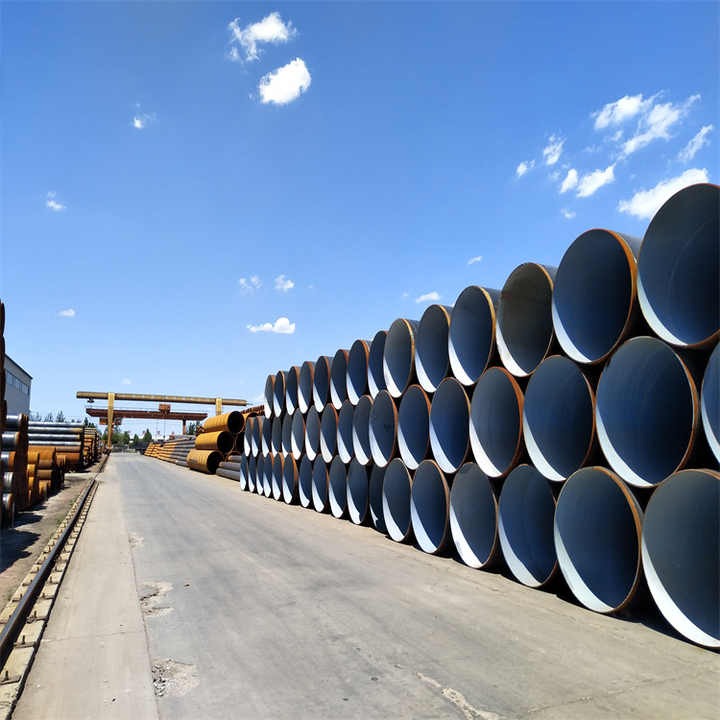
Scientific studies demonstrate TPEP’s superior performance. For instance, a 2023 lifecycle analysis in Middle Eastern desalination plants showed TPEP coatings retained 92% corrosion protection after 15 years, compared to 73% for dual-layer FBE systems. The coating’s ability to withstand high-salinity conditions, as seen in Saudi Aramco’s Marjan offshore field, underscores its suitability for marine environments. Its thermal efficiency, achieved through synchronous inner and outer coating application, minimizes heat loss, making it ideal for pipelines transporting hot fluids. The one-time film formation process further enhances coating uniformity, reducing defects and ensuring consistent protection.
TPEP’s versatility extends to various pipe types, including seamless, spiral, and straight-seam steel pipes. Its application involves advanced techniques like thermal spraying for the inner wall and high-pressure extrusion for the outer wall, ensuring uniform coverage. The coating’s flexibility allows it to adapt to different terrains, from acidic soils to flood-prone regions, as evidenced by its use in Vietnam’s Mekong Delta irrigation systems. This adaptability, coupled with a service life exceeding 50 years, positions TPEP as a cost-effective solution for long-term infrastructure projects.
2. Pipe Sizes and Specifications
TPEP-coated steel pipes are available in a wide range of sizes to meet diverse industrial needs. Common nominal diameters (DN) range from DN40 to DN1800, accommodating applications from small-scale water supply lines to large-diameter oil and gas pipelines. The wall thickness varies depending on the pipe’s intended use, burial method, and pressure requirements, typically ranging from 4 mm to 25 mm. The coating thickness is equally critical, with the outer wall coating spanning 2.0–4.0 mm and the inner wall coating at 0.35–0.5 mm. These specifications ensure optimal protection while maintaining structural integrity.
| Material | A53 Gr.B,A36,ST52,ST35,ST42,ST45,X42,X46,X52,X60,X65X70 |
| Standard | API 5L,ASTM A106 Gr.B,ASTM A53 Gr.B,ASTM A179/A192,ASTM A513,ASTM A671,ASTM A672,BS EN 10217,BS EN10296,BS EN 39,BS6323,DIN EN10217 |
| Certificates | API 5L,ISO9001,SGS,BV,CCIC |
| Outer Diameter | 15mm-1200mm |
| Wall Thickness | SCH10,SCH20,SCH30,STD,SCH40,SCH60,SCH80,SCH100,SCH120,SCH160,XS,XXS |
| Length | 1m,4m,6m,8m,12m according to buyer’s request |
| Nominal Diameter (DN) | Outer Diameter (mm) | Wall Thickness (mm) | Outer Coating Thickness (mm) | Inner Coating Thickness (mm) | Material |
|---|---|---|---|---|---|
| DN40 | 48.3 | 3.2–4.5 | 2.0–2.5 | 0.35 | A53 Gr.B,A36,ST52,ST35,ST42,ST45, X42,X46,X52,X60,X65X70 |
| DN100 | 114.3 | 4.0–6.0 | 2.5–3.0 | 0.40 | A53 Gr.B,A36,ST52,ST35,ST42,ST45, X42,X46,X52,X60,X65X70 |
| DN300 | 323.9 | 6.0–12.0 | 3.0–3.5 | 0.45 | A53 Gr.B,A36,ST52,ST35,ST42,ST45 ,X42,X46,X52,X60,X65X70 |
| DN800 | 813.0 | 8.0–16.0 | 3.5–4.0 | 0.50 | A53 Gr.B,A36,ST52,ST35,ST42,ST45 ,X42,X46,X52,X60,X65X70 |
| DN1800 | 1820.0 | 10.0–25.0 | 4.0 | 0.50 | A53 Gr.B,A36,ST52,ST35,ST42,ST45 ,X42,X46,X52,X60,X65X70 |
These specifications are tailored to meet standards like API 5L and ISO 21809-1, ensuring compatibility with global pipeline systems. The choice of material, typically Q235 or Q345 carbon steel, balances strength and cost-effectiveness. For specialized applications, such as fire-fighting systems, flame-retardant epoxy resins are used to enhance corrosion resistance under high-temperature conditions. The coating’s mechanical properties, including tensile strength and impact resistance, are superior to those of traditional coatings, reducing the risk of damage during installation or operation.
The sizing and specification of TPEP pipes are influenced by project requirements, such as pressure ratings, fluid type, and environmental conditions. For example, large-diameter pipes (DN800–DN1800) are preferred for long-distance water pipelines due to their high flow capacity and durability. Smaller pipes (DN40–DN150) are common in urban water supply and drainage systems, where flexibility and ease of installation are critical. The coating’s thickness is adjusted based on the pipe’s exposure to corrosive media, with thicker outer coatings used in offshore or acidic soil environments.
3. Key Parameters and Performance Metrics
The performance of TPEP-coated steel pipes is defined by several key parameters, including coating adhesion, corrosion resistance, mechanical strength, and thermal stability. Coating adhesion, measured per ASTM D4541, typically exceeds 30 MPa, ensuring the coating remains intact under mechanical stress. Corrosion resistance is evaluated through salt spray tests (ASTM B117), where TPEP coatings show no significant degradation after 10,000 hours of exposure. This durability is critical for pipelines in marine or high-salinity environments, such as offshore oil fields.
Mechanical strength is another vital parameter, with TPEP coatings exhibiting excellent impact resistance (≥10 J per ISO 6272) and abrasion resistance. The polyethylene outer layer’s toughness prevents damage from construction activities or environmental stressors like plant roots or soil movement. Thermal stability, tested per ISO 21809-1, allows TPEP pipes to operate in temperatures ranging from -40°C to 80°C, making them suitable for both arctic and tropical climates. The coating’s low water absorption (<0.1% per ASTM D570) further enhances its resistance to moisture-related corrosion.
Comparative data highlights TPEP’s advantages over other coatings. For instance, a 2024 study in Corrosion Engineering, Science and Technology compared TPEP with dual-layer FBE and epoxy coal tar pitch coatings. TPEP exhibited a 40% lower corrosion rate in acidic soils and a 30% higher impact resistance. Its cathodic disbondment resistance, tested per CSA Z245.20, was superior, with a disbondment radius of <3 mm after 28 days, compared to 8 mm for FBE. These metrics underscore TPEP’s ability to maintain integrity in challenging conditions.
The coating’s application process also contributes to its performance. The inner FBE layer is thermally sprayed at high temperatures (200–250°C), ensuring uniform coverage and strong adhesion. The outer polyethylene is applied via high-pressure extrusion, creating a seamless, defect-free layer. This dual-process approach minimizes coating imperfections, enhancing long-term reliability. The parameters are rigorously controlled to meet standards like DIN 30670 and NACE RP0394, ensuring consistent quality across production batches.
4. Scientific Analysis and Comparison with Other Coatings
A scientific analysis of TPEP coatings reveals their superiority in combating corrosion, a pervasive issue costing industries $2.5 trillion annually. Corrosion occurs due to electrochemical reactions between steel and environmental factors like moisture, oxygen, and salts. TPEP’s tri-layered structure interrupts these reactions by creating a multi-barrier system. The FBE layer isolates the steel from corrosive media, the adhesive ensures interlayer stability, and the polyethylene outer layer shields against physical and chemical damage. This multi-faceted approach outperforms single-layer coatings like epoxy coal tar pitch or galvanized zinc.
Comparative studies provide concrete evidence of TPEP’s advantages. In a 2023 field test in Indonesia’s flood-prone regions, TPEP-coated pipes showed no corrosion after five years in acidic, waterlogged soils, while galvanized pipes exhibited pitting within two years. The TPEP coating’s dielectric properties, with an electrical resistance of >10^12 Ω·cm², prevent stray current corrosion, a common issue in buried pipelines. Its flexibility (elongation >400% per ASTM D638) allows it to withstand soil settlement and thermal expansion without cracking, unlike brittle epoxy coal tar coatings.
Against 3PE coatings, TPEP offers enhanced inner wall protection. While 3PE relies on external polyethylene layers, its inner surface is often uncoated or minimally protected, leaving it vulnerable to internal corrosion from transported fluids. TPEP’s inner FBE coating addresses this, providing comprehensive protection. A 2022 study by the American Water Works Association found TPEP pipes reduced internal corrosion by 85% in potable water systems compared to 3PE. This dual-sided protection is critical for applications like water treatment plants, where internal contamination can lead to regulatory penalties.
Cost-benefit analysis further supports TPEP’s adoption. While initial costs are 10–15% higher than FBE or galvanized coatings, TPEP’s 50-year lifespan and low maintenance requirements yield a 30–40% reduction in lifecycle costs. For example, Texas’s Coastal Water Authority reported a 90% decrease in maintenance expenses after switching to TPEP for a 200-mile brine line. These savings, coupled with TPEP’s environmental resilience, make it a preferred choice for modern infrastructure projects.
5. Applications and Case Studies
TPEP-coated steel pipes are deployed across diverse industries, from oil and gas to water management and renewable energy. In the oil and gas sector, TPEP’s resistance to saltwater and microbial corrosion makes it ideal for offshore pipelines. Saudi Aramco’s Marjan field expansion utilized TPEP pipes, achieving a projected 40% reduction in lifecycle costs due to reduced maintenance and replacements. The coating’s ability to withstand high-pressure and abrasive conditions ensures reliable performance in subsea environments.
In water supply systems, TPEP pipes are prioritized for their durability and compliance with health standards. The U.S. Bipartisan Infrastructure Law allocated $55 billion for water system upgrades, with TPEP pipes specified for replacing aging cast iron pipelines. Philadelphia’s Water Department reported a 90% reduction in pipe replacements after adopting TPEP, citing its resistance to corrosion-induced contamination. The coating’s smooth inner surface also minimizes friction, improving flow efficiency and reducing energy costs.
Renewable energy infrastructure is an emerging application for TPEP pipes. Offshore wind farms in the North Sea use TPEP-coated piles for turbine foundations, as standard coatings degrade 30% faster in high-wave-energy zones. Germany’s HyLand hydrogen pipeline initiative plans to deploy 1,200 km of TPEP pipes by 2030, leveraging their resistance to hydrogen embrittlement and external corrosion. These case studies highlight TPEP’s versatility and alignment with global sustainability goals.
The coating’s adaptability to extreme conditions, such as acidic soils in Southeast Asia or high-salinity marine environments, ensures its relevance in climate-vulnerable regions. Its fire-retardant variants are used in fire-fighting systems, where corrosion from extinguishing agents is a concern. By addressing diverse challenges, TPEP pipes enhance infrastructure resilience and reduce environmental impacts associated with frequent replacements.
6. Future Trends and Innovations
The future of TPEP coating technology is poised for advancements driven by material science and digitalization. Researchers are exploring nano-enhanced epoxy primers to improve adhesion and corrosion resistance at the molecular level. Graphene-infused polyethylene outer layers are being tested to enhance mechanical strength and thermal conductivity, potentially extending service life beyond 60 years. These innovations aim to address emerging challenges, such as hydrogen transport in green energy pipelines, where conventional coatings face embrittlement risks.
Digitalization is transforming TPEP coating production. Automated production lines, equipped with real-time data analytics, improve coating uniformity and reduce defects. Companies like Haichuan have developed large-diameter TPEP anti-corrosion lines with energy-efficient processes, lowering emissions and production costs. These advancements align with global sustainability mandates, such as the EU’s Green Deal, which prioritizes eco-friendly infrastructure materials.
Market trends indicate growing demand for TPEP pipes, driven by infrastructure investments and climate adaptation projects. The global TPEP market is projected to grow at a 12% CAGR through 2030, fueled by applications in offshore wind, hydrogen transport, and water management. Regulatory pressures, such as stricter corrosion standards in the oil and gas industry, further incentivize TPEP adoption. As industries prioritize longevity and environmental stewardship, TPEP’s role in future-proofing pipelines is undeniable.
Innovations in application techniques, such as robotic thermal spraying and AI-driven quality control, promise to enhance coating precision. These developments will reduce human error and ensure compliance with evolving standards like ISO 21809-4. By integrating cutting-edge materials and smart manufacturing, TPEP coatings will continue to set the benchmark for pipeline protection, supporting critical infrastructure in an increasingly challenging world.

